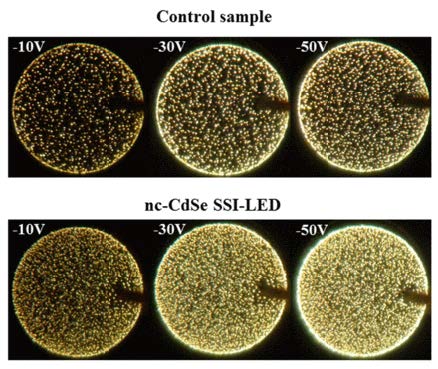Dr. Yue Kuo, professor in the Artie McFerrin Department of Chemical Engineering at Texas A&M University, is continuing ongoing research in the field of microelectronics and semiconductor microchips that is evolving everyday technology such as cellphones, televisions, computers and more through the use of light emitting diodes (LED).
Kuo’s research group focuses on the development of semiconductors for micro and nano electronic uses. This has entailed working with technologies from television screens to devices like universal serial bus (USB) flash drives to make them faster, smaller and more power efficient.

Kuo and his research group have developed a new type of LED known as a solid state incandescent light emitting device (SSI-LED). This device would emit light for an extended lifetime at a very low energy cost. Kuo currently has one of these LEDs his group has deployed that has been continuously emitting light for in excess of 18,000 hours. The development of these LED devices has progressed from the same kind of technology that powered the first incandescent light bulb developed by Thomas Edison.
“The chips used to make electronic devices work [come] from the vacuum tube,” Kuo said. “It was invented in 1907, and this tube was big. The first computer ever invented was made of thousands of these tubes. However, these vacuum tubes are not very reliable and the power consumption is very high and they burn out easily.”
Kuo explains that technology has leaped from the vacuum tube, to transistor, to the modern microchip, which enables scientists to fit billions and billions of transistors into a single chip. Beyond microchips are the semiconductors that Kuo primarily works with that form the essential computer hardware components of electronic circuits. While advanced, similar issues that plagued traditional vacuum tubes such as a short life span and energy inefficiency, still effect modern day semiconductors, according to Kuo.
“What I and my group have done is invented a new light bulb that is very similar in comparison to the leap from a vacuum tube to a computer chip,” Kuo said. “We make a small chip with no vacuum that can emit light, but is so small, smaller than your fingernail, that it will not burn out after even 20,000 hours of use.
For comparison, current larger incandescent light bulbs have a maximum lifespan of around 2,000 hours of use, meaning that Kuo’s SSI-LED is both more energy efficiency and has greater device longevity than conventional technology in addition to being no bigger than a human fingernail. The SSI-LED that Kuo and his group have developed has many uses, one of which includes potentially using the light emitting technology to transfer electrical signals within computing devices. Kuo believes that a development of this magnitude would change the way everyday computer users are able to communicate with one another.
“The computer chips we have today are very fast, but as you know nothing satisfies us and no matter how fast we have, we want faster,” Kuo said. “We’ve come, in terms of the modern design for computer chips, almost near the limit. The current speed is limited by how fast the signal is transmitted by metal. What we want to do is to transmit signals by light.”
The LED Kuo’s group has invented is made out of silicon, giving it the potential to transmit signals in machines by light. This method would send signals tens of thousands of times faster than current transmission methods allow.
“SSI-lEDs are an extension of Edison’s technology in a way,” Kuo said. “Inside each are many, many small dots that emit light, each one is like Edison’s lamp. The engineers in my group use chemical engineering training to make computer chips and transistors that we make into things like your LCD TV’s that affect the lives of all people every day and that kind of potential is limitless.”